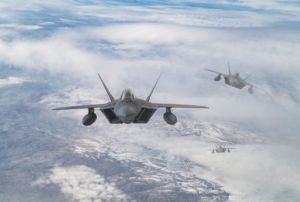On Monday 20 March, the contract for the launch of phase 1B comes into force. Engineers from Dassault, Airbus, Indra and Eumet have 36 months to develop the NGF demonstrator, the fighter aircraft at the heart of the programme.
20 March 2023 could become a historic date in the European aeronautics industry. That is the day the first stage, phase 1B, of the air combat system of the future enters its operational phase.
In its Saint-Cloud (92) premises, Dassault Aviation, the prime contractor and architect of this phase of the programme, is hosting teams from Airbus, Indra and Eumet (a joint venture between Safran Aircraft Engines and MTU Aero Engines). Together, they will work on the NGF (New Generation Fighter), the fighter aircraft at the heart of the combat system. They now have 36 months and a budget of €3.6 billion to prepare the NGF demonstrator, which they must present in 2029.
For this design phase, a "digital platform" was created using Dassault Systèmes' Catia software. This digital design tool is the most widely used in the world in aeronautics and shipbuilding. Among its users are Boeing, Bombardier, Airbus and even the US Navy for the Virginia class submarine that will soon equip Australia.
The era of collaborative combat
The NGF is intended to replace the French Rafale and the German and Spanish Eurofighter, the three partner countries, from 2040. This aircraft will not only be more powerful, but also designed for new forms of combat. It will have new weapons such as hypersonic missiles and laser cannons. The fighter will be connected to drones as well as to air, naval, land and space capabilities via a 100% European combat cloud.
"Using cutting-edge technologies, the Scaf will therefore enable our armed forces to benefit fully from the era of collaborative combat," explained Sébastien Lecornu, Minister of the Armed Forces, in December when the agreement signed between the manufacturers was announced.
At the next Paris Air Show (19 to 25 June 2023), we will certainly not see a model or even a sketch of the NGF. At the previous edition, in 2019, a scale model was exhibited for the symbol.
"That would be science fiction. We are entering an industrial study phase and the design will depend on many technical factors that will not be finalised at that time," explains a manager at Dassault Aviation.
The challenges of Phase 2
Is the future of the Scaf secure? Everything seems to say so, but nothing is said. At the end of this 36-month period, an additional 5 billion euros will be needed to launch phase 2, which should lead 36 months later to a flying prototype, the famous demonstrator. And for this optional tranche.
This new budget will have to pass through a vote in the three partner countries, each of which will set its own conditions for continuing the programme. France and Germany have already announced their willingness to closely monitor their industrial interests. The phase 1B negotiations ensure that Dassault does not share its technologies and know-how.
An important issue is to allow France to freely export the NGF to supply Rafale customers without risking a German veto. For Dassault, export is a central issue.In the meantime, the Rafale will not remain grounded with the arrival of the NGF. It will remain "on line until 2060". The Air Force and Naval Aviation fleets are currently being upgraded to the F4.1 version. Dassault's teams have also begun work on the F5 standard, which will be launched between 2026 and 2027. This future Rafale will be Scaf compatible and also ready for collaborative combat.





